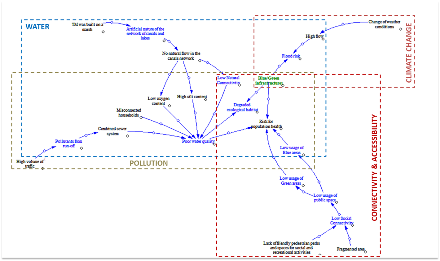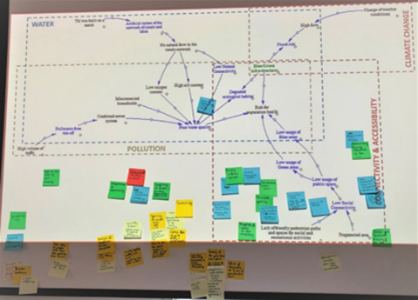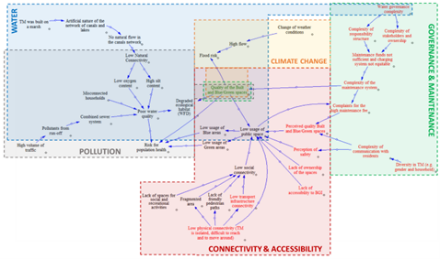
Developing a Shared Concern
Bringing together key institutional stakeholders to jointly identify a shared concern.
UCL Team
Author
Contact UCL Team
Email
Details
Thamesmead is an area spanning for about 750 ha along over three miles of the Thames River, in South-East London (UK). Administratively covering two of the 32 boroughs constituting London, about 45,000 people are distributed in 16,000 households, with a significantly lower population density than inner London, and twice the amount of green space per person than the London average. Since 2014, 65% of Thamesmead housing estate has been owned by the Peabody Housing Trust, and a masterplan will soon outline a 30-year regeneration vision, with a £1 billion investment to capitalise the opportunities of the area.
The first step was to develop a series of short, semi-structured scoping interviews with stakeholders. The interviews aimed to gather information on perceptions of the problems affecting the case study, perceptions of the evolution over time of the problems, perceptions of the causes and consequences, current policies and strategies. After the problem-scoping interviews, a ‘Shared concern workshop’ was carried out. This workshop brought together key institutional stakeholders and collaborators for problem identification and to jointly scope the focus within the case study. Using the background information collected via interviews, during this workshop we discussed the most pressing problems to understand the direction of the future modelling activities. The main outcome of this workshop was consensus over a shared concern which serves as a representation the different concerns and stakes carried by the different stakeholders. The areas of concerns elicitated from the interviews were: water, climate change, pollution, connectivity and accessibility. During the workshop, the stakeholders had the opportunity to expand these areas and they jointly identified the shared concern as “quality of the built blue and green environment to ensure a long-term stewardship in Thamesmead”. The next steps after this workshop were CLD building and analysis.



This work is based on the idea that stakeholder groups have a rich and diverse understanding of a problem context. The identification of a shared concern allows the group to efficiently bring the focus of attention and resources to a problem that need to be tacked as a group.
This work was co-funded by the CUSSH (Complex Urban Systems for Sustainability and Health) and CAMELLIA projects.
This section covered phases 1 and 2 of the multi-step methodology we used. Phases 3, 4 and 5 are described in the next sections.
- Problem scoping interviews. A series of short, semi-structured interviews supported institutional stakeholder engagement and data collection for background information.
- Shared concern workshop. This problem identification workshop brought together key institutional stakeholders and collaborators to jointly scope the focus of this work within the case study.
- Participatory system dynamics modelling (causal loop diagrams) - CLDs building workshops. A set of workshops aimed to build several CLDs around the selected shared concern was carried out; each CLD represented the perception of the system boundaries for a group of stakeholders.
- Comparing qualitative models - Causal loop diagram analysis. A novel analysis of the content of the CLDs.
- Participatory system dynamics modelling (simulation model). Simulation-based strategy development - A set of steps to build a simulation model from causal loop diagrams that is richly grounded in stakeholders’ experience, including a prioritisation workshop, aimed to recognise and discuss differences and similarities in the perceptions of system boundaries.
Keywords:
Shared concern; Problem formulation; Consensus; Workshops; Stakeholders; Participatory System Dynamics; Thamesmead
Links:
Pluchinotta I., Salvia G., Zimmermann N., (2022). The importance of eliciting stakeholders’ system boundary perceptions for problem structuring and decision-making, European Journal of Operational Research, 302(1) https://doi.org/10.1016/j.ejor.2021.12.029 ❐